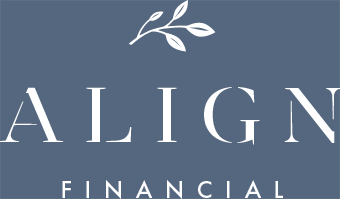For many years, the reverse mortgage has had a bad reputation, leading many retirees (and their financial advisors) to discount it as a viable option.
Keep in mind, I don’t currently work with any clients utilizing a reverse mortgage. However, it’s a topic that’s recently found its way back into the mainstream due to Wade Pfau’s research in Reverse Mortgages: How to Use Reverse Mortgages to Secure Your Retirement.
Pfau, a giant in the world of retirement research, has been getting the word out about how a reverse mortgage can help preserve wealth longer by offsetting sequence of returns risk–a timely topic in a negative market environment. (Sequence of returns risk is the risk the market will decline early in your retirement years, forcing you to take distributions from your investment portfolio when values are depressed and thus draw down your financial resources faster.)
While it’s important to be aware of the potential scams associated with reverse mortgages, they may be a useful retirement planning tool in some cases. At the same time, reverse mortgages are complex and don’t make sense for everyone. It’s important to do your homework and consider all options to determine if this financial strategy is right for you.
What Is a Reverse Mortgage?
A reverse mortgage is a type of loan that allows homeowners to convert part of their home equity into cash. In general, reverse mortgages are for homeowners who are at least 62 years old and have paid off all or most of their mortgage.
Here’s how it works:
- Rather than making monthly mortgage payments, the lender pays you a lump sum, a line of credit, or monthly payments depending on the type of loan you select.
- You continue to pay for property taxes, homeowners insurance, and maintenance on your home.
- Interest on a reverse mortgage accrues over time, increasing your loan balance.
- The balance is due when you sell your home, permanently move out, or pass away.
Also, keep in mind you may not be able to borrow the full value of your home–even if you’ve paid your mortgage off completely.
While several factors may impact your borrowing power, the FHA also sets lending limits for Home Equity Conversion Mortgages (the most common type of reverse mortgage). In 2023, the lending limit is $1,089,300 for all single-family mortgages.
Types of Reverse Mortgages
There are three types of reverse mortgages: Home Equity Conversion Mortgages, single-purpose reverse mortgages, and proprietary reverse mortgages. Each type of reverse mortgage has its potential benefits and limitations depending on your financial situation, needs, and goals.
Home Equity Conversion Mortgage (HECM)
Backed by the U.S. Department of Housing and Urban Development (HUD), HECMs are the most common type of reverse mortgage. They’re designed for homeowners aged 62 or older who have substantial home equity.
HECM loan amounts are based on your age, the value of your home, and current interest rates. Borrowers can choose to receive funds as a lump sum, a line of credit, monthly payments, or a combination of these options.
Before obtaining an HECM, you must complete mandatory counseling with a HUD-approved counselor to ensure you understand the terms and conditions of the loan.
Single-Purpose Reverse Mortgage
As the name suggests, single-purpose reverse mortgages are designed for a specific purpose, such as home repairs, improvements, or property taxes. State and local government agencies or nonprofit organizations typically offer these loans to low- to moderate-income homeowners.
Each lender specifies how the borrower can use the loan proceeds. The borrower must then use the funds for the designated purpose.
Single-purpose reverse mortgages are generally the least expensive option. However, availability and eligibility requirements vary by location.
Proprietary Reverse Mortgage
Proprietary reverse mortgages are private loans from banks, credit unions, and other financial institutions. These loans are not backed by the federal government.
Generally, proprietary reverse mortgages are designed for homeowners with high-value homes who may not qualify for an HECM due to the FHA’s lending limits. While they may have higher loan amounts and offer more flexibility in terms of payout options, they may also have higher fees and interest rates compared to HECMs.
Potential Advantages of a Reverse Mortgage
A reverse mortgage may help you enjoy your retirement years with less financial stress. But like most financial products, it can also be complex and costly. Therefore, it’s important to weigh all the pros and cons before making a decision.
Let’s start with the potential advantages of a reverse mortgage:
- Supplementary retirement income. Reverse mortgages can provide an additional source of income in retirement, which can help you cover living expenses, healthcare costs, or other financial needs without tapping into retirement savings.
- Tax-free payments. The IRS considers reverse mortgage payments to be loan proceeds and not income. Thus, any payments you receive are tax-free.
- No monthly payments. A reverse mortgage can help alleviate financial stress and free up cash for other expenses since you don’t need to make monthly payments toward your loan balance.
- Continued homeownership. You retain full ownership of your home while living in it, as long as you meet the requirements of the loan.
Potential Drawbacks of Reverse Mortgages
Despite the possible benefits, reverse mortgages aren’t without their drawbacks. Some of the potential drawbacks of a reverse mortgage include:
- High fees and expenses. Reverse mortgages can have high upfront and ongoing costs, including origination fees, mortgage insurance premiums, and servicing fees.
- Decreased home equity. Your equity in your home decreases as your loan balance increases. Thus, a reverse mortgage potentially eliminates a key source of funds for your retirement or to pass on to your heirs.
- Strict loan requirements. You must continue to pay property taxes, homeowners insurance, and maintenance costs during the life of the loan. Failure to do so may result in default.
- May limit your options. A reverse mortgage may prevent you from taking advantage of other financial solutions that provide similar benefits, such as a home equity line of credit.
Of course, everyone’s situation is unique, and there may be additional advantages and drawbacks to consider when deciding if a reverse mortgage makes sense for your retirement plan. Be sure to consult an experienced financial planner or reverse mortgage expert, who can help you conduct a thorough analysis of your options.
Who Should Consider a Reverse Mortgage?
A reverse mortgage may be appropriate for retirees who have significant equity in their home and need supplementary income in their golden years. If you prefer to age in place, a reverse mortgage allows you to tap into the equity you’ve accumulated to cover living expenses and other costs that arise throughout retirement.
Borrowers must also meet certain criteria to qualify for a reverse mortgage. These eligibility requirements typically include:
- Borrowers must be 62 or older.
- You must own your home outright or have paid a substantial portion of your mortgage.
- The property must be your primary residence.
- You can’t be delinquent on any federal debt.
- You must have the financial resources to pay for property taxes, homeowners insurance, and ongoing maintenance during the life of the loan.
- To obtain an HECM loan, borrowers must participate in an information session with a U.S. Department of Housing and Urban Development (HUD)-approved reverse mortgage counselor.
Alternatives to Reverse Mortgages
If a reverse mortgage sounds like the answer to all your problems, keep in mind there are alternative products and strategies that provide similar benefits. Examples include:
- Downsizing. Selling your current home and purchasing a smaller, more affordable property can free up cash for retirement expenses. It also allows you to build equity in a new property rather than draw down your existing equity. But it’s not always a cut-and-dry decision. Here are six things to consider before downsizing.
- A home equity line of credit (HELOC). A HELOC allows you to borrow against your home’s equity, often at a lower interest rate than a reverse mortgage. However, HELOCs also require monthly payments, which may be problematic if you’re on a fixed income.
- Refinancing. Refinancing your existing mortgage with a lower interest rate or a longer-term loan can help reduce monthly payments and free up additional cash. However, with interest rates currently on the rise, this may not be a viable option for homeowners who’ve locked in low mortgage rates.
While the above list isn’t exhaustive, the bottom line is there may be other ways to achieve your financial objectives without giving up equity in your home. A financial planner and a reverse mortgage expert can help you evaluate your options and potential alternatives.
Additional Considerations
Indeed, there are many factors to consider when determining whether a reverse mortgage makes sense for your retirement plan. Here are a few additional considerations that may be helpful as you weigh your options.
- Tax implications. Reverse mortgage proceeds are typically tax-free. However, it’s a good idea to consult with a tax expert or financial planner to understand how taking on this type of loan may impact your overall tax situation.
- Estate planning goals. A reverse mortgage can reduce the value of your state, leaving less to pass on to your heirs. Since the loan is due upon your death, either your estate or your heirs are responsible for paying the balance. This may involve selling the home, refinancing the mortgage, or using other assets to pay off the debt. Meanwhile, there may be less home equity available since reverse mortgages decrease your equity over time. Be sure to consider your estate planning goals before making any decisions.
- Impact on government benefits. Reverse mortgage proceeds may affect your eligibility for certain government benefits, such as Medicaid or Supplemental Security Income (SSI).
- Longevity risk. If you outlive your reverse mortgage proceeds, you may face financial challenges in later years. Therefore, it’s essential to have a comprehensive financial plan in place to avoid outliving your financial resources.
Consult an Expert Before Taking Out a Reverse Mortgage
A reverse mortgage can be a valuable retirement planning tool for some homeowners, providing much-needed cash flow and financial flexibility. Yet it’s important to carefully weigh the advantages and drawbacks and consider all options before making a decision.
Remember: not all reverse mortgage lenders are created equal, so do your research and choose a reputable, experienced lender. In addition, be sure to discuss your decision with your spouse, children, or other family members, as it may impact their inheritance or future financial plans.
Lastly, consult a trusted financial planner like Align Financial to determine if it makes sense for your retirement plan. We’ll help connect your money to your life in a way that feels right to you and your family, so you can retire comfortably and on your terms.
To see if we may be the right fit for your financial planning needs, please contact us. We’d love to hear from you.













